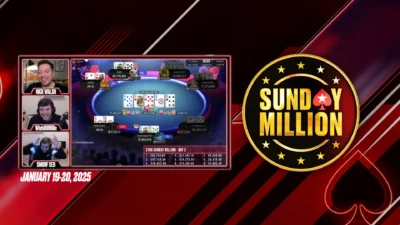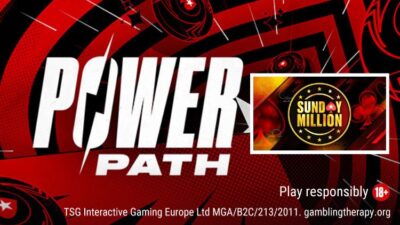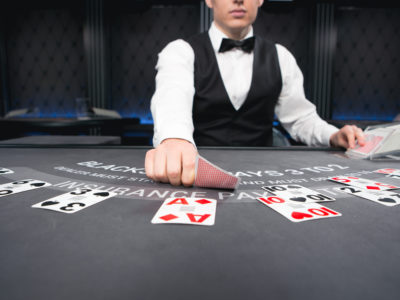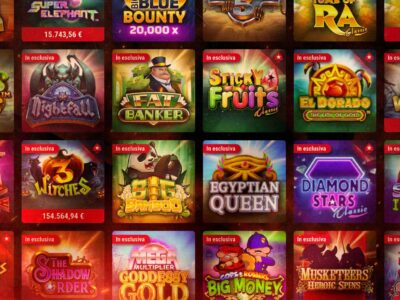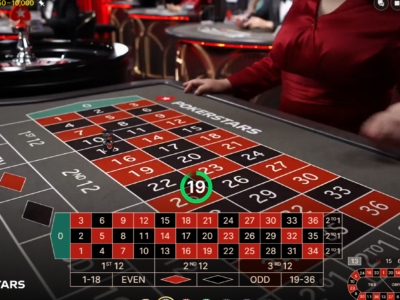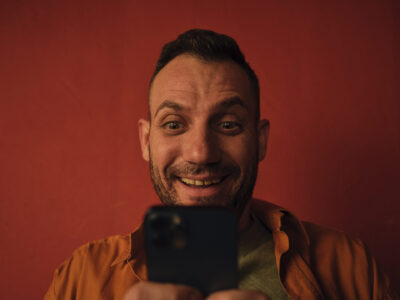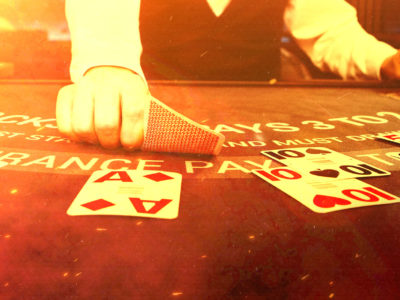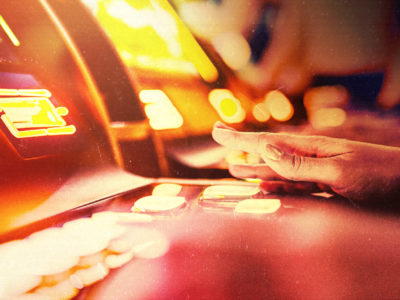Unless your TV, internet and social media channels have all been broken for the past month or so, you’ll likely have heard about Squid Game, Netflix’s smash-hit thriller from South Korea. The nine-part show is the most watched new production of all time on the streaming service, with Bloomberg reporting that at least 132 million people worldwide streamed at least two minutes of it in the first 23 days of its release.
If you’re one of the few who hasn’t watched it yet, the following a) might not make much sense, and b) will reveal some important plot points, so you’re probably best clicking away. But if you’re already sitting there in your green tracksuit, crunching on an umbrella-shaped honeycomb snack, fidgeting with some marbles in your palm, and eyeing red lights and green lights with terror, then please do read on.
This article is for you, gganbu.
WELCOME TO THE WORLD OF SQUID GAME
Contestants in the fictional Squid Game universe are forced to play a series of playground games scaled up in both size and stakes. In fact, the stakes couldn’t be higher: there’s the equivalent of 45.6 billion Korean won (roughly $38 million) on offer to the winner, but losing contestants are slaughtered, usually by being shot by an army of masked henchmen. It’s bloody, terrifying stuff, where it pays to be both brave and strategically savvy. If you’re not, you will die a grisly death.
Of course, poker players know a bit about being brave and strategically savvy. And they too know a bit about playing games in which the aim is to battle through large fields to secure huge cash prizes. And so we thought it might be interesting to hear what a elite poker player thinks of Squid Game and, specifically, whether there are any strategies that perhaps the players on the TV series missed that might have helped them survive.
Enter Ben “bencb789” Rolle, indisputably one of the very best poker players in the world, who is also credited as being a peerless poker coach whose roll-call of students includes some of poker’s most decorated talents. Steffen Sontheimer once said of Rolle: “His knowledge of theoretical concepts and application across player pools of all levels is a skill rarely seen.” But how would Rolle apply his theoretical concepts to Squid Game? How would the man whose training site is called Raise Your Edge help hapless Korean game show contestants raise their edge, and avoid paying the ultimate price?
Rolle wasn’t making any promises that he had the answers to Squid Game‘s many teasers, but gamely he agreed to look at the show’s trials and try to find the best route.
“I think it’s kind of hard…because it’s very exploitative,” Rolle said. “But certainly there are some approaches we can talk about where you essentially maximise your EV, which in this case is maximising your likelihood of winning and surviving.”
And with that, on with the games…
GAME 1: RED LIGHT, GREEN LIGHT
Overview: In the show’s first game, players need to make their way across a huge playground, presided over by an enormous toy doll at one end. Contestants can only move when the doll has said “green light” and turned its head away. If a contestant moves after the doll says “red light” and turns to face the playground again, they are shot dead.
Commentary: It’s worth noting that before the players start this game, they are unaware that failure means death. They have not yet been told what the purpose of their presence is on the island where the games take place, nor the penalty for failure. The characters are also not yet aware that they are competing against one another, so there is little outright sabotage. In fact, there are examples of players helping out one another and forming early bonds.
Bencb says: “This was a bit of a surprise because you didn’t know that it was about your own life, that your own life was at risk. But assuming that once we realise our lives are at stake, and that we can somehow control our emotions, what I would try to do is not be too close to other people. One of the reasons we can potentially lose is that other people bump into us. When green light is on, everyone is running and maybe people try to push us or bump into us. Then red light turns on and we are about to fall on the ground and we can’t control it.
What I realised is that they actually have a lot of time. They don’t have to rush it. This was actually the easiest of all of the games and I think the only way you can lose it is if someone else compromises you. So I would try to get as much space as possible, go wherever there are not so many people next to each other. That’s where you could gain the biggest edge in this game from an exploitative standpoint.
There were more than 450 players and it didn’t look like there was a lot of space. It reminded me actually of the Tour de France. In these bicycle races you can bump into each other. And especially when shots are being fired. Someone could fall over his own feet and fall into you. That’s what I would be looking for. And then take it slow. They had plenty of time. You didn’t need to rush it. All the people that were running too fast, they died.
Player count: The full field of 456 players is reduced to 189 in the first game; 267 die (59 percent).
GAME 2: HONEYCOMB
Overview: In stage one of the game, players are told to line up in front of one of four shapes: a circle, a triangle, a star or an umbrella, though they do not know why. In stage two, they are given a flat honeycomb candy with their shape marked on it. They have to separate the shape from the honeycomb without breaking the shape. If they break it, they die.
Commentary: By common agreement, the complicated umbrella shape is considered to be the worst shape to pick, with a mix of lines and curves meaning it is difficult to separate from the honeycomb intact. Online commentators have suggested that, conversely, the triangle is the easiest, with only three straight lines. Some people have said that the star is good because the lines are shorter, even though there are more of them. In the show, the main character, who has the umbrella shape, hits upon the solution of licking the honeycomb to soften it, make it more pliable and make it easier to separate the shape.
Bencb says: [In the selection phase] you should try to follow everybody else, because they know that these are all children’s games and it’s very likely there would be some who already know what the game is going to be and which is going to be the easiest shape. You should line up where most other people are lining up. Sometimes it makes sense not to go with the crowd, but in this particular instance the crowd intelligence is giving you a particular hint as to whether one shape is easier than the others.
If we had known the game, I would have taken the circle or the triangle. I would have tried to avoid the star. Even though the lines are short you still have to go in many directions and you’re very likely not going to be super calm so I prefer slow, steady motions over going up and down, left and right. I think you are more likely to make mistakes in the star form than in the triangle where you just basically have to turn three times. Also it’s about breaking. If you look at the top end of the star, I think they are more fragile than a triangle or a circle. And break more easily than the circle and the triangle.
Player count: Of 189 players in this game, 79 are eliminated (42 percent); 110 players remain (24 percent of starting field).
OVERNIGHT: At the end of the honeycomb game, players are give only one egg and one bottle of water each for their dinner. One group of players concoct a scheme to get double their allocation, which leaves the equivalent number hungry, and cultivates an atmosphere of mutual mistrust and enmity. Players form into gangs and there is a deadly riot overnight, during which more than 20 people die. There are 80 players left.
GAME 3: TUG OF WAR
Overview: Players are told to get together in groups of 10, but are not told why. Players are able to negotiate with each other to form their teams but, with only a few exceptions, the contestants tend to stick with the allegiances they formed overnight, during the riot. The result is teams that mostly comprise both men and women of varying strengths. When the eight teams have been formed, they are informed that they will be competing in four tug-of-war matches, on top of a high platform. The losing team will be pulled off the platform and die.
Bencb says: “What can you really do about the selection process in tug of war? I think since all the games are either to do with precision, quickness or coordination, and there is a certain amount of strength, without trying to be sexist, I think you need to try and get as many men as possible in your group. Of course there are going to be a lot of games where women certainly excel but I think these games were mostly about strength. I can’t think of a game right now where it might be a disadvantage to have a lot of men in your group.
[If you notice your group is weak] you have to make a decision if you want just go on your own and say, “Guys I’m going to join another group.” But then you risk being alone at night. You might lose your protection during the night and you might get killed. That also might come into play. The entire group dynamics are interesting. If you join a new group you’re going to be the newest member and they might not really care about you as much as the others. Everyone just wants to win so you might just get killed, stabbed in the back in the middle of the night.
Probably this is where all decisions are very close and you don’t have a lot of room to gain an edge. A lot of the options are going to come with huge disadvantages.”
Player count: Half the field is eliminated in tug of war: 80 becomes 40. Overnight, an extracurricular plot is also exposed resulting in the death of one contestant plotter. They go to the next game with 39 players remaining (8.5 percent of starting field).
GAME 4: MARBLES
Overview: Players are told to separate into pairs, but are again not told why. When all the players are in pairs (except for one woman; there is an odd number of players), they are each given a pouch of 10 marbles and told to devise a game that will end with one player having won all of their opponent’s marbles. The player who loses their marbles will be killed.
Players come up with a number of different games, but with Ben we focus on just one, played by two of the central characters. In this game, both players conceal an unknown number of marbles in their fist. Player A then guesses whether Player B has concealed an odd or an even number of marbles. Player B then opens his hand and reveals how many marbles have been hidden. If Player A has guessed correctly odd or even, he wins the round. If he has guessed incorrectly, Player B wins the round. The prize equals the number of marbles Player A has hidden in his hand, either passing from B to A if A has guessed correctly, or from A to B if A has guessed incorrectly. In other words, Player A sets the stakes for the game. After the exchange of marbles, the players then switch roles and the game continues until one player has all the marbles. The game then ends and the loser is shot.
Commentary: During the selection process, players tended to partner with someone with whom they have an existing relationship (including one husband and wife), although some other solitary players tried to negotiate their way into partnerships with players they perceive as being a good partner. The fact that these two close partners are then pitted against one another becomes a painful rug-pull. They must perform a fight to the death from which only one can survive.
As for the game with the marbles concealed in hands, this looks on the face of it like it might be a solvable game with, perhaps, a GTO approach feasible. There are elements of rock, paper, scissor, for which a GTO approach exists. But…
Bencb says: “I have never played this game before and I’m a bit lost on this game, to be honest. In my opinion, this game is pure luck. Maybe there is a way to win it, but I don’t know it.”
Ben did agree that there might be some parallels with heads-up poker in this game, particularly when deciding the size of ones bet. If one player feels he has an edge over his opponent, he might be inclined to bet only a small amount of marbles in the early stages as he attempts to analyse an opponent and pick up reads. On the other hand, if a player feels he is inferior, he might want to bet a large amount of marbles increasing the variance to its maximum. It’s the same way in which a superior poker player would choose to keep pots small against an inferior opponent, while the underdog would want to make the pots big.
Bencb says: “If you have a poker background and you’re able to collect reads on your opponents, then that makes sense. Maybe there’s also some psychology in terms of your personality. If you’re someone that would pick an even or an odd number. Everyone has their own favourite number. We have these superstitious traits within us. I can imagine that if you got a read on someone that would lean you more toward him picking even or odd, there might be an edge. But this is very player dependent. If we assume we’re playing against an unknown, I just think it’s really hard to get an edge. But I like the general point. I think it makes sense.”
Player count: Only 15 players make it through the marbles game, but they are rejoined by the woman who was left out, leaving 16 heading into the next round. Only 3.5 percent of the starting field remains.
GAME 5: GLASS STEPPING STONES
Overview: The remaining players enter a room where they are told to pick a number between 1 and 16, and wear a vest bearing that number. Again, they do not know why. After they have decided on their number, they are then told to enter a room in order, Player 1 at the front and Player 16 at the back. They are then faced with a series of 18 pairs of glass stepping stones, forming a bridge across a huge chasm. Each step across the bridge presents two possible places for players to jump: one of reinforced glass, which will hold the weight of up to two players, the other of normal glass, which will shatter when stepped on. Players therefore have to make a 50/50 decision for their life at every step along the way. Players at the back of the line have the advantage of seeing where players before them have stepped, and can learn for certain if some platforms are made of reinforced glass. There is a time limit of 16 minutes for the whole game. If it expires, everyone still remaining will be shot.
Commentary: This is another game with two distinct phases: the selection phase, where the players need to choose their order in the line, and then the game phase, where they need to jump across the bridge. One player, near the front of the line and facing 15 decisions, calculates his chances of success at two to the power of 15, or a 1-in-32,768 chance. (For all 18 tiles, it’s 262,144-to-one.) Another player, in the middle of the pack, progresses along the platforms he has learnt are solid but then stops dead when he is forced to choose. He insists that others go before him, and says he will not budge until they do. With the clock ticking down, his strategy has some success.
Bencb says: “I think this is where you can have the biggest impact on the outcome. At first this seems to be very random. And also a lot of luck. But in the selecting process, if you think about it, they were down to only 16 and you know that only one can win. You don’t know how many more games are going to come, but you can probably assume that it’s going to be two, maybe three more games. So very likely, only three, four, five are going to survive this game.
In the previous games, it started with something like 60 percent surviving, then 50 percent surviving, now it has to get less and less otherwise there will be too many games. I think you could assume that no more than 50 percent are going to survive, more like 20 or 30 percent are going to survive.
It’s very likely that either the first numbers are going to help you survive, or the last numbers. So I think picking something in the middle is pretty bad. This is where you have to coin flip. If you’re in the middle, I think your chances of survival are something like 0-10 percent. Probably like 0-5 percent. At the ends, of course if you’re wrong — in this case at the beginning — then you have no chance. But if you’re at the end, you’re essentially always surviving, 80 to 100 percent.
Basically you have a coin flip between zero and 100 percent. So if you pick the first numbers or the last numbers, you have a 50 percent chance of surviving. In one instance, you have zero percent, on the other you have 100 percent. So your equity is 50 percent on average.
The main guy [the character in the show] is right. It’s either going to be a game based on time, where being first is going to give you a massive advantage, or it’s a game where you benefit from starting last, to see what everyone else does. It was also based on time, but there was enough time.”
Is this like a poker player making the most of having position at the table? “That’s true, but if the people in the positions in front of you, if they’re not able to advance as far as possible, you still have too many tiles left. They would compromise you by starting to fight against each other and throwing each other off the board. Every life in front of you is super valuable because it gains you information, which glass is stable and which is fragile. You have an interest as well if there’s a riot.”
Was the bully smart to dig in and not move?
“This is probably what you have to do, but it only works if you’re the first guy that does it. Otherwise it’s just going to have a rolling effect. Everyone says, ‘If you don’t go then I don’t go.’ You might also be banking on the fact that this guy is bluffing. You go: ‘OK, if you don’t go then we don’t go either.’ That’s probably where it would be smart for the others to team up and say, ‘None of us will go.’ For the next guy in the line, it would have been smart to just turn around and say, ‘If he’s going to do that, then I’m going to do it as well. And then the next guy. Nobody is going to move. Let’s just team up, we all agree that nobody is going to move, and then we all die.’ Because then you have the highest chance of the bad guy saying, ‘OK, fuck it, I have to go.’ That’s when he realises. Ten guys teaming up and agreeing on that, maybe sitting down and acting as if they don’t want to go, that’s the way to force him to go.
But the most crucial moment in this game was in the selection, when they had to pick the number. I think I would have picked the first three or the last three.”
OTHER POKER PARALLELS IN SQUID GAME
There were a couple more ways poker players might have been successful in Squid Game over and above the methods highlighted by Ben for the games above.
Most particularly, the keen observational skills honed by poker players could have been of great help in picking up a few hints along the way. The dormitory in which the players spend their down time had murals painted on the walls, depicting the various games. It would therefore have been possible to predict what was coming up, which would have helped in the selection processes for Tug of War, Marbles and the Glass Stepping Stones.
Poker players’ ability to elicit information from table talk would also have helped in many areas. In one of the Marbles games, a player is able to convince a more credulous opponent to hand over his marbles and set off on a wild goose chase. This naive player is betrayed and is killed. This shows the power of speech play or, at least, being able to keep quiet if you are not especially good at it.
Squid Game is streaming globally on Netflix. Ben “bencb789” Rolle is alive and well and playing poker at PokerStars, and will head to EPT Prague in December. We thank him for his time and good humour in producing this article!
Back to TopView Other Blogs










